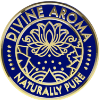How are Essential Oils made?
Essential oils are actually extracted from certain plants, trees, and fruits using a technique called distillation. Since plants contain such a small amount of extract, several pounds of plants are needed to provide a small bottle to consumers. The essential oils are then refined and distilled and packaged in containers that help maintain the scent and fragrance for a good amount of time. The following is a list of treatments and extract procedures that produce the essential oils for our use in aromatherapy or creams.
Steam Distillation
Steam distillation is the most popular and the oldest distillation process available. Old time, traditional aromatherapy professionals believe this method is the best way to produce the most quality extracts. This system takes dried or fresh plants and places them into a steam chamber. The steam is put under pressure and then circulated in and out of the plant material. The heat from the pressurized steam causes the plant’s cellular structure to open and the essential oils pour into a holding container. This is a delicate method since the heat must be well balanced to open the plant but not too hot causing destruction of the delicate oil.
After the steam and oil are distilled into a container, the steam returns to a liquid while the oil creates a film at the top of the solution. Both the liquid and the oil are both therapeutic by-products of the process. The oils can be packaged as pure essential oil extract. The water still holds a lot of the oil properties, so it is used by cosmetic companies in toners or skin creams.
Cold Pressing
Extracts from fruits such as bergamot, grapefruit, lemon or limes use different forms of processing. The essential oils are mainly in the fruit’s peel, so they need to be penetrated. The fruit’s peel is rolled over a large array of sharp objects that cause the peel to burst and the oils extracted. Then the fruit is squeezed and the juice contained. Like steam distillation, the essential oils rise to the top of the juices as a film. They are separated by centrifugations into containers that are packaged to consumers.
Enfleurage
This method of extraction is used for flowers or plants that are very delicate. Some plants are too delicate to withstand the heat from steam distillation. Enfleurage uses animal fat to absorb the essential oils from the delicate flowers. As the petals are depleted from their oils, more are placed on the animal fats until it is completely saturated with the extract. After the fat is saturated, the fat is treated with alcohol which solvates the essential oils. Once the mixture is contained, the alcohol will evaporate leaving behind the essential oil product.
Solvent Extraction
Solvent extraction is the most efficient and affordable way to separate the extract from the plant. In this method, a solvent is used to saturate the plant and absorb the oils. After saturation, it is then treated with alcohol. Like enfleurage, the alcohol eventually evaporates and it leaves only the essential oils for packaging. This method is especially useful for more expensive extracts where each plant needs to be squeezed for its extract as much as possible. Although this method is the most cost efficient, it can leave solvent in the product which can cause side effects.












